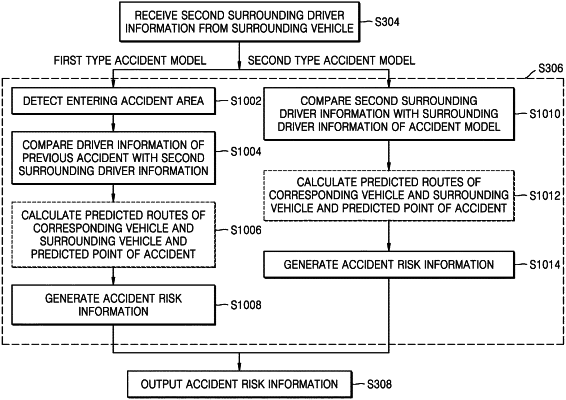| CPC B60W 30/095 (2013.01) [B60R 11/04 (2013.01); B60W 50/16 (2013.01); G01C 21/3415 (2013.01); G06F 21/32 (2013.01); G06V 20/584 (2022.01); G06V 20/62 (2022.01); B60W 2050/0075 (2013.01); B60W 2556/10 (2020.02); B60W 2556/65 (2020.02)] | 19 Claims |

|
1. An electronic device for a vehicle, the electronic device comprising:
communication circuitry;
an output interface;
a memory; and
at least one processor configured to:
store, in the memory, accident modeling information including at least one of a history of accidents at a present location, and a first driver habit information of a driver associated with the history of accidents at the present location, the first driver habit information including information on the driver's behaviors and tendencies during driving of the vehicle,
receive at least a portion of a second driver habit information from at least one external vehicle proximate to the vehicle via the communication circuitry, the second driver habit information including information on a driver's behaviors and tendencies during driving of the at least one external vehicle,
generate accident risk information based on a degree of similarity between the first driver habit information included in the accident modeling information and the second driver habit information, and
output the generated accident risk information through the output interface, and
wherein the first driver habit information and the second driver habit information further include at least one of lane keeping ignorance information, signal compliance information, guide ignorance tendency information, overtaking tendency information, regulated speed compliance information, center-line over information, non-protected high speed entry information, or bumper-to-bumper driving information.
|